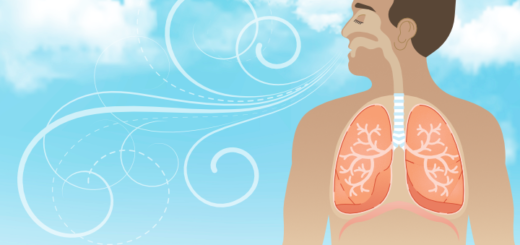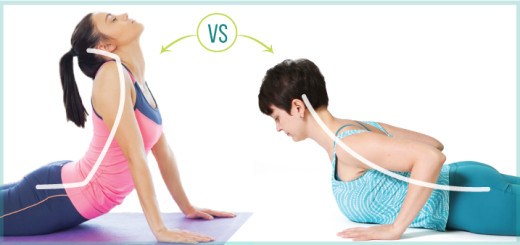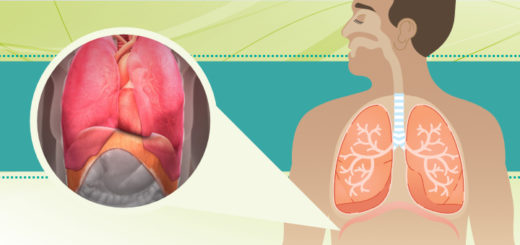Too much of the same thing leads to trouble: Three main Ayurvedic principles that affect our inner balance
4Growing up in Russia, I was used to people blaming their colds and other maladies on skvoznyak (draft). You would often hear things like: “I had an awful cold last week, probably because it was very drafty in my office the week before.” My husband, an American, laughs at the idea of a flu virus “being blown in by the wind,” but this is not how most Russians view it. The effect of drafty conditions is not that it gives you a cold, but that it disturbs your body’s inner equilibrium, making you less resilient and more susceptible to the viruses already circulating around. This idea of an internal “wind disturbance” is a common concept in Ayurveda. It is called vata imbalance, which can even reach the level of vata derangement. It means that you either have too much vata (air, wind) in your system and /or that your vata is disturbed/ disorganized. When we speak of one or more doshas being out of balance, it means that one or more qualities associated with that dosha are expressed excessively or are deficient.
- The main qualities of vata are dryness, lightness, and coldness. The primary function of vata is movement of all types, including nerve impulses, sensory signals, and air within the lungs. Vata is also clear, subtle, and rough.
- The main quality of pitta is heat. The heat in the body is a product of metabolic activity; therefore, all metabolic activities in the body are guided by pitta. Pitta is also oily, sharp, and light.
- The main qualities of kapha are coldness, stability, and the ability to bind and hold structures together. All functions in the body involved in maintaining structural stability are governed by kapha. Kapha is also heavy, dense, slow, and both hard and soft.
All these qualities exist in our bodies and minds within certain ranges. For example, a vata dominant person will have a higher degree of dryness and coldness than a pitta person. This is perfectly normal. However, if the quality of dryness becomes significantly increased beyond the person’s normal range, it might lead to health issues, like very dry skin, brittle bones, creaky joints, and an overall decrease of moisture in the system. This can happen to a person of any constitutional type, but it is more likely to happen to somebody who is a vata-dominant because their base level of dryness is higher.
According to Ayurveda, many of our physical, physiological, and mental-emotional issues can be traced to imbalances of certain qualities within our systems. These imbalances often happen because of how we interact with our environment, including the food we consume, lifestyle choices we make, the type of activities we choose to engage in, and so on. Those same qualities described above that exist in our bodies also exist all around us in our environment. Since we are constantly interacting with our environment, the qualities in our external environment consistently affect the qualities in our internal environment.
Three main principles guide the interaction of qualities between our external and internal environments:
1. Like increases the like. If you consistently encounter a certain quality in your external environment that is like the quality you have in abundance, it will increase the like quality in your internal environment (1+1=2). For example, regularly exposing your bare hands to dry cold wind will make your skin dry, cold, and rough.
2. Opposites tend to balance each other. If you consistently encounter a certain quality in your external environment that is opposite to the quality you have in abundance, it will balance out your inner quality. (1+(-1) = 0) For example, keeping your hands in gloves when you expose them to dry cold wind and moisturizing them regularly will keep your skin soft.
3. Like craves the like. When you have a certain quality in abundance, you will crave foods, experiences, and environments that have the same quality. (1+1+1+…=?) For example, when you feel heavy and stagnant, you might crave heavy, rich foods and prefer activities that don’t require much movement. Rich foods and lack of movement will make you feel even heavier. This is why it can be so hard to get out of the cycle of imbalance.

When multiple qualities associated with a particular dosha are increased, that dosha becomes disturbed and imbalanced. Let’s come back to our concept of skvoznyak (draft) causing one’s cold in the office. Let’s say you are sitting in a cold office (coldness) in the fall (transitional time of year) next to a drafty window when it’s cold and windy outside (coldness and erratic movement). The clothes you are wearing are not warm enough, and you keep getting chills (coldness). You are juggling multiple work projects (erratic movement) and feel anxious about a looming deadline (erratic mental activity). Your colleagues keep coming over and asking you questions, interrupting your concentration (erratic mental activity). There is a constant barrage of electronic information that’s coming your way (erratic sensory activity). You get a salad for lunch (coldness) that you eat in a hurry (erratic activity) and get caught up in office gossip (erratic sensory activity) that you feel uncomfortable with. By now, you are already experiencing an overload of vata qualities, particularly if you are a vata dominant type. If you also slept poorly the night before, all that excess disorganized vata in your system could turn into a hurricane, weakening your system and lowering your natural defenses. All it takes is for someone to cough in your general direction, and the virus might sneak in. And even if you don’t get sick, you will still end up stressed, discombobulated, and anxious.
Some of the factors in the scenario above cannot be controlled (time of year, weather conditions, work assignments, your colleagues’ communication styles). But there are many factors that you CAN change. For example, you can move away from a drafty window, wear warm clothes, pace your workload, eat hot soup for lunch, go for a walk by yourself instead of gossiping, and so on. It might seem silly—how would eating soup for lunch help me feel less stressed at work? Of course, by itself, it won’t change much, but in combination with other choices, it might help you maintain balance in the course of your day instead of exacerbating imbalance. Remember our math from earlier? If you keep piling up qualities that disturb your vata (1+1+1+1+1+1=6), you will end up with vata overload. But if you make choices that have opposite qualities, you end up with an entirely different formula (1+(-1)+1+(-1)+1+(-1)=0) and successfully balance your vata in the course of your day.
The key idea of a yoga practice based on Ayurveda is that we can use six main factors—diet, environment, lifestyle, exercise, breathing techniques, and mental practices—to restore and maintain the balance of qualities within our systems. Unfortunately, we rarely look at our foods, routines, and lifestyle choices from the perspective of qualities they transfer to us; maybe it’s time to start? Next time we will do just that—tune in!
[jetpack_subscription_form]




















Thank-you, that is a helpful way of looking at and balancing things. It makes so much sense.
Thank you Claire! So happy to hear that it resonates with you.
Excellent article Olga and so well explained. I have had an interest in Ayurveda for at least 15 years…it makes so much sense. However it has taken me almost that length of time to have an understanding of how to keep the Vata in balance from all the different angles!!
Your article explains it so well.
Thank you
Thank you Helen! And I hear you–I find vata to be the trickiest of the doshas 🙂 I will be sure to touch on that in my future posts; thank you for the reminder!